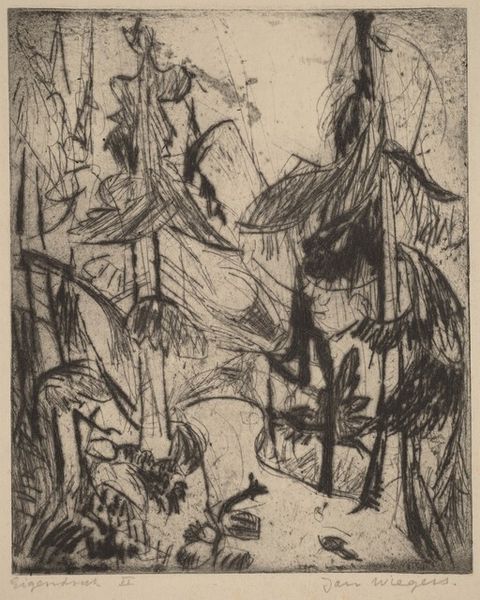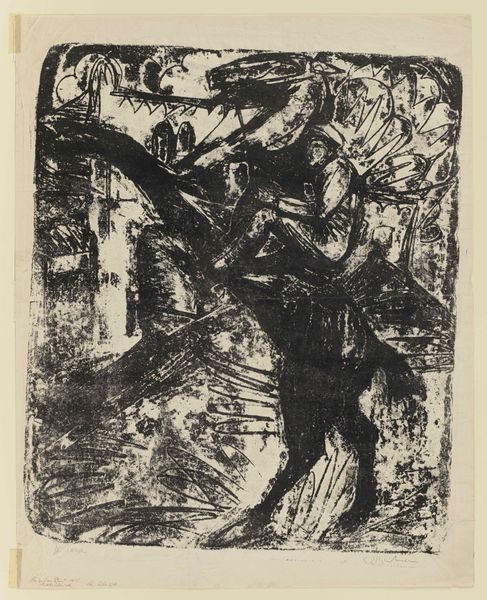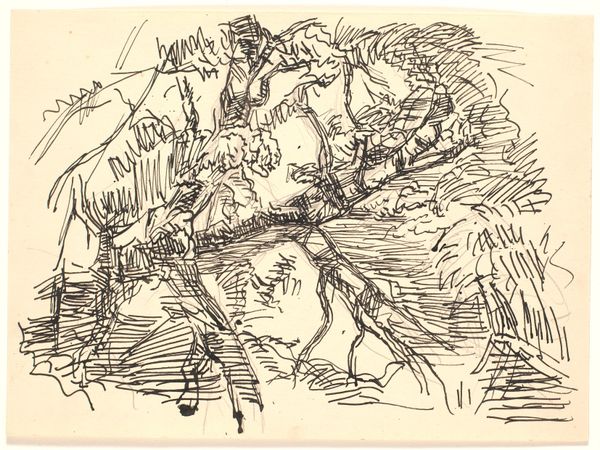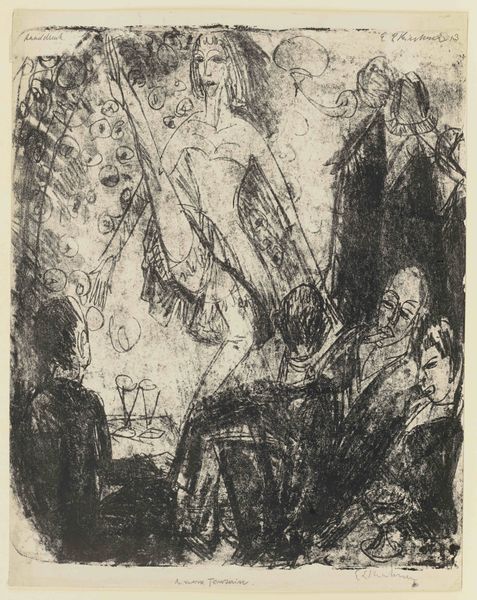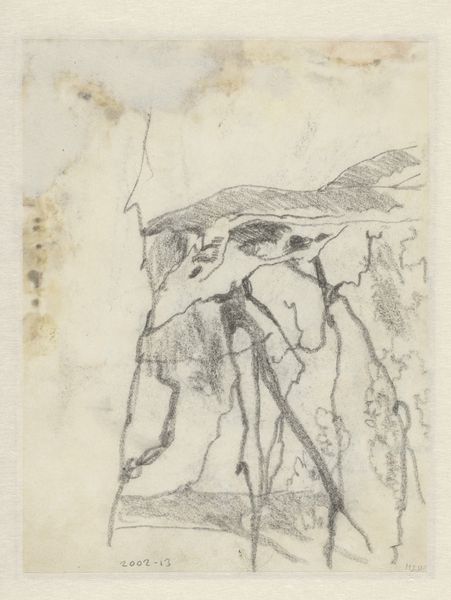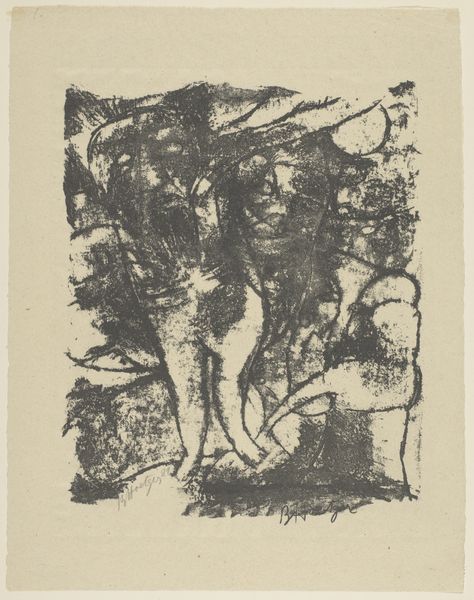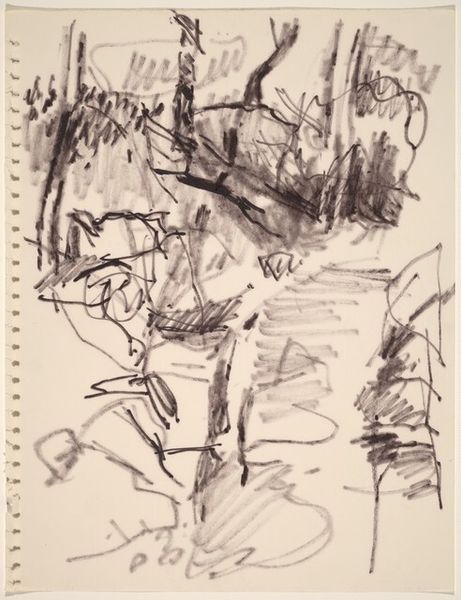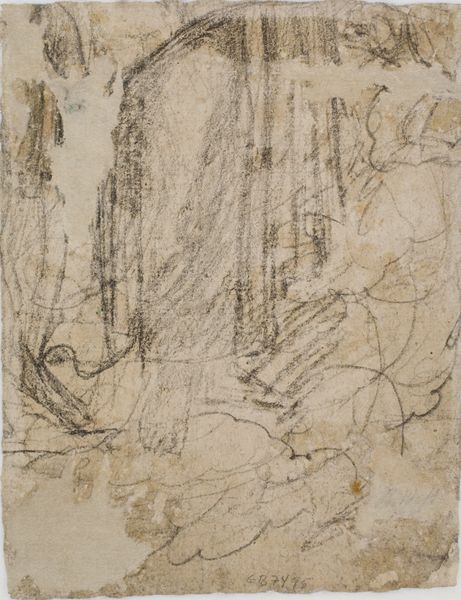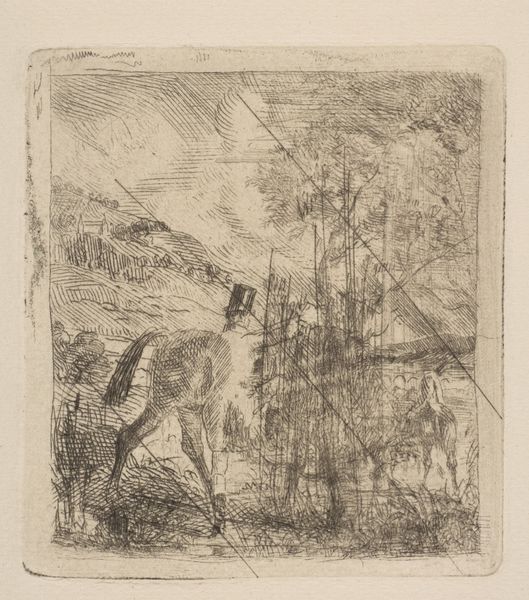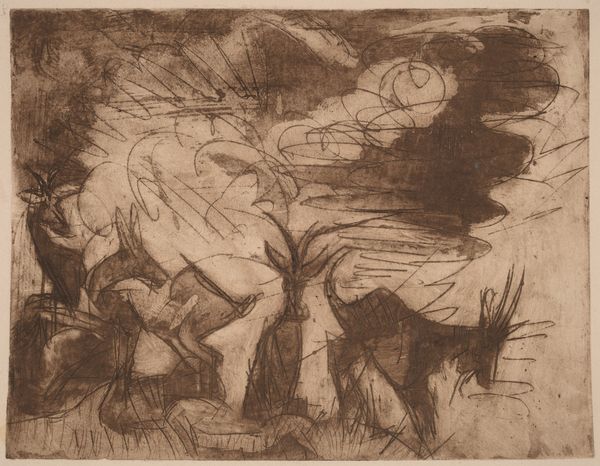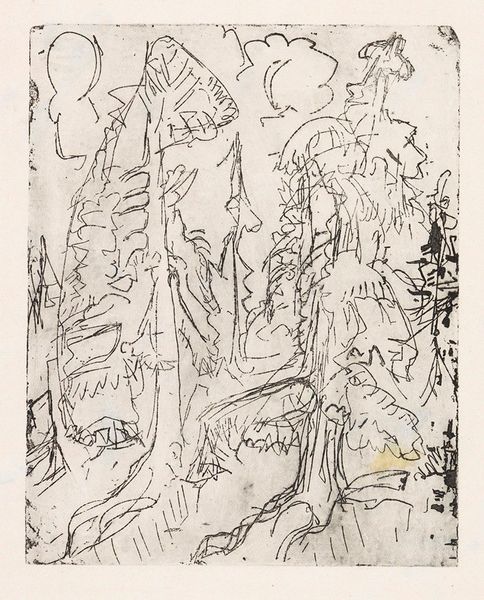
Copyright: Public Domain
Curator: Oh, this is intriguing! It’s Victor Müller’s “Hamlet and Horatio,” created around 1868. We’re fortunate to have it here from the Städel Museum. What’s your first take? Editor: It feels incredibly tense, almost chaotic. All those frantic lines seem to trap the figures. Is it an etching or a wash? Curator: It appears to be a combination of pencil, ink and wash, a flurry of media! Müller clearly sought a sense of immediacy in capturing the psychological turmoil of Shakespeare's characters. The monochromatic wash suggests a melancholic and grave atmosphere. Editor: Interesting, because you could almost feel the rapid execution – as though the artist was wrestling with the material itself in an effort to give physical form to something so tormented. Was it typical of the period for artists to be experimenting with these sort of layered techniques? Curator: Müller, working within the Romantic tradition, explored such heightened emotional states frequently. But more than a study in madness, this drawing reveals archetypal aspects of melancholy. It shows us the hero grappling with his tragic fate, underscored by those expressive strokes of the pen and pencil. Editor: Yes, looking closer, I am intrigued by how much the stark material presence speaks of emotional depths of the iconic literary masterpiece it depicts. The materiality serves, in essence, as a window into both individual and collective understandings of mortality and grief. Curator: Exactly, the very lines seems to embody Hamlet's wavering mental state, an intimate portrayal rather than a grand performance. We see reflected humanity's eternal dance with death. Editor: It is a fascinating intersection between stage, personal expression, and the very physical act of creating – leaving us considering not only Hamlet's predicament but Müller’s choices in portraying him. Curator: Precisely, a confluence where narrative, visual language and making reveal powerful universal truths. Editor: Indeed, offering new perspectives into how the drama is re-enacted and re-imagined across generations.
Comments
No comments
Be the first to comment and join the conversation on the ultimate creative platform.
